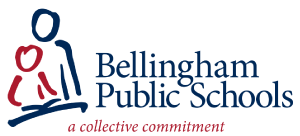Family Engagement
Family engagement is a key strategy of The ∑¨«—”∞ ” Promise because the research is clear. Your involvement in your child‚Äôs education matters. Students whose families are engaged in their school lives attend class more regularly, achieve at higher levels, and generally have better behavior both at home and at school.
What is family engagement? It is a term for the ongoing reciprocal partnership between families and educators that supports student achievement. A quality approach to family engagement encourages and supports two-way communication about student progress and performance to build a strong home-to-school connection.
∑¨«—”∞ ” Public Schools has adopted a tiered approach to elementary and middle school family engagement, where a baseline of ongoing communication about student performance is shared with all families and more intensive communication strategies are put into place for students and families as needed.
- Elementary Family Engagement Model
- Elementary Family Engagement Information Spanish Russian Vietnamese
- Middle School Family Engagement Information Spanish Russian Vietnamese
Reporting Student Progress
Clearly communicating student progress to families is a critical aspect of our family engagement model. Several tools are available for this purpose: Skyward Family Access, Designated Family Engagement Time at elementary and middle schools, Curriculum Nights and Open Houses, Quarterly Progress Reports, and Semester Report Cards.
Elementary Report Card Guide Spanish
Middle School Report Card Guide Spanish
Skyward Student Information System and Family Access
∑¨«—”∞ ” Public Schools use a student information system called Skyward to report student progress. This technology improves our staff‚Äôs ability to manage data, monitor student progress and communicate important information with students and families. All district families have received receive log-ins and passwords for accessing the web-based Skyward Family Access. If you do not have your login information, please contact your child‚Äôs school.
Standards-Based Reporting
∑¨«—”∞ ”‚Äôs elementary and middle schools have adopted a Standards-Based approach to reporting student progress. Standards based instructional practices in the classrooms offer students clear learning targets and guide teachers with proficiency levels for student performance expectations for learning standards. Scores (4, 3, 2, 1) are earned on assignments, assessments and class work to show where students are in relation to the standard and/or expectation.
Elementary and middle school report cards will go home with students in February and again in June.
